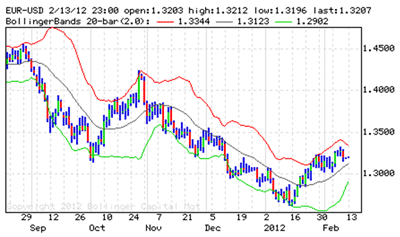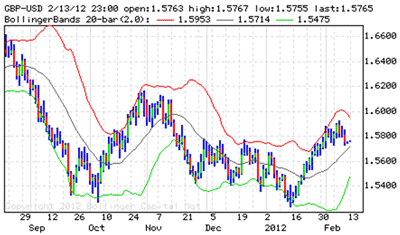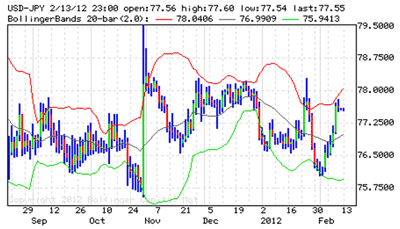World currency and equity markets will be reacting to the acceptance of the newest Greek debt deal, and while a relief rally in the euro and other risk assets may ensue, it’s unlikely to be sustained for the long term.
It would seem we’re finally about to see the last act of the never-ending Greek debt drama, but even that’s likely wishful thinking, not the least because so many prior deadlines have been moved. This weekend was to see the full Greek parliament vote on approving the latest Greek budget needed to obtain the next installment of the second EU/IMF bailout package. [The budget measures were approved by roughly a two-thirds majority, sparking riots and protests in Greece overnight – Editor.]
The Greek budget plan presented to EU finance ministers on Thursday was deemed inadequate, and the Greeks were told to find an additional EUR 325 million in cuts, an amount which would seem relatively easy to find. But Greek junior coalition members were already rebelling against the new budget pact and were vowing to make no further sacrifices.
At last count, five cabinet ministers resigned, and with Athens the scene of strikes and riots, we think there is a non-trivial risk that the measure may fail. However, our primary scenario remains that Greece will pass the required austerity budget and secure the needed bailout funding to avoid a default on the EUR 14.5 billion in bonds maturing on March 20.
Monday is also the deadline for Greece to conclude an agreement with private sector investors (PSI) on a debt swap to reduce the overall amount of Greek debt. The latest reports suggest an agreement is likely, but we still have no sense of how great the PSI participation will be, which is the key to determining whether the debt swap is a “credit event,” potentially triggering credit default swap payouts.
On Friday, S&P indicated that any Greek imposition of a retroactive “collective action clause” (CAC—allowing a supermajority of bond holders to approve a change in the terms of outstanding bonds) on Greek government debt as part of the PSI deal would constitute a “selective default.” So the risks of a credit event still loom large for European financial markets this week.
If the Greek budget deal is passed, we would expect another relief rally in EUR and other risk assets, though we would not expect it to endure for very long given the serious doubts markets still hold over the longer-term sustainability of Greece.
There is significant gap risk over the weekend and in both directions, depending on the outcome, if the Greek parliament manages to vote on Sunday. If the vote is stalled into Monday, then we would look for risk to waver until a final vote is held.
This Wednesday will see the EU finance ministers meet to approve the Greek budget package, and we can no longer expect them to simply rubber stamp whatever the Greeks present, leaving risk in limbo until mid-week at least.
Signs of a Potential Risk Reversal
Risk assets retreated and the US dollar (USD) bounced back to end the past week as traders pared positions ahead of the weekend due to the risks out of Greece. However, charts in many markets point to a potentially larger reversal in risk overall, which we have previously cautioned about as the Greek dénouement poses a classic “Buy the rumor, sell the fact” set-up.
Bearish engulfing lines (bearish reversal patterns after an advance) dominate the daily candles in markets ranging from the S&P 500 to AUD/USD and EUR/USD. Weekly candlestick charts show spinning tops, indicating indecision over the current directional move and potentially warning of a reversal.
The US dollar index is also set finish out above the daily Tenkan line on the Ichimoku charts, another sign of a possible reversal higher for the buck and lower for risk assets.
Additionally, Friday’s price declines in risk pairs have broken below clear up channels, another indication that the recent risk rally may be reversing.
Data in the coming week is likely to highlight further risks to the global recovery, with preliminary 4Q GDP reports for Europe and Japan forecast to show quarter-over-quarter (QoQ) declines of -0.4% and -0.7%, respectively.
The Reserve Bank of Australia’s (RBA) weaker outlook disclosed in their minutes released this past Friday is another harbinger of renewed caution on growth.
NEXT: Charts and Key Price Levels for 3 Major Currency Pairs
|pagebreak|In terms of specific price levels, EUR/USD is testing a broken trend line from earlier highs at 1.3165/1.3170, which is now key support. The daily Tenkan line also converges at that level (1.3174), and a daily close below would provide greater confidence that a medium-term high has been seen.
GBP/USD was neatly rejected by its 200-day moving average at 1.5935 and is closing back below the top of the cloud (1.5765) and the daily Tenkan line (1.5814). Further weakness below the 1.5700 recent range lows would see scope to the cloud base/Kijun line in the 1.5540/80 area, at least initially.
USD/JPY is diverging from the reversal in US Treasury rates at the end of the week, and we would look for it to eventually play catch up and move lower alongside US yields. This could bring an added element of JPY cross selling if risk sentiment falters as events unfold.
Overall, we would prefer to use remaining strength in risk FX as an opportunity to get short, which may occur on a final Greek relief rally.
By Brian Dolan, chief currency strategist, FOREX.com
























